The word comes from the Sanskrit word Rangaavali – which itself is a combination of two words – Rang, meaning colour and Aavali meaning creepers or lines. Rangaavali, or Rangoli, as we call it today, thus, literally translates into ‘coloured lines’ and that is what it essentially is – lines drawn in colour – inside or outside the house. It could be a celebration of a festival, an expression of happiness, a sign of welcome, a symbol of cleanliness and purity… but all it is, essentially, is lines of colour.
Rangolis are something you can see in every corner of India, no matter where you go. It is mostly a Hindu tradition, but I have seen Rangolis outside churches in southern India too, and some of my Muslim friends are as adept at it as I am!

They are known by different names in different parts of the country. Rangoli is the word used in Northern India… In the south, it is called Kolam. In the east it is called Alpana, and there are other names for it in different states. Besides, the method and patterns vary even more than the name…. it is more an expression of creativity blended with tradition than anything else.
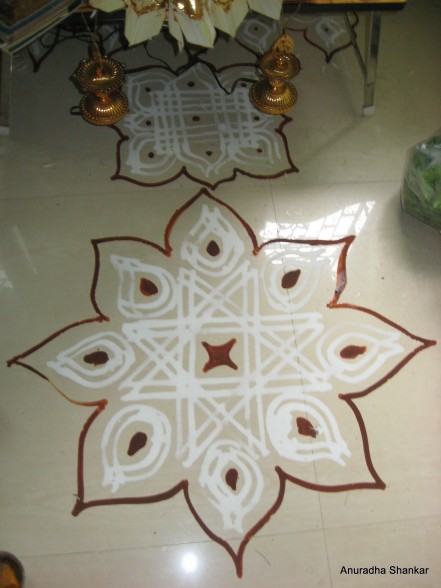
Being a south Indian, I was brought up learning to draw the kolam the traditional way. Each day, we could clean the space outside our house and draw a simple geometric pattern with rice flour. The simple kolam was an indication that the house was clean and people were welcome. For special occasions, we ground rice flour and used the wet flour to create more intricate creations, both inside and outside the house.

On such occasions, outside the line of white flour, we would add a line made of a red paste, usually made of red earth which is quite common across India. The white and the red contrasted beautifully to give a festive look to our house.
In Tamilnadu, the months of December and January are the best time to see kolams – these months are considered auspicious, and outside every house big and small, you can see a beautiful pattern, each competing with the other in intricacy and detail!
During the festival of Karthikai, which is the south Indian equivalent of Diwali, beautiful kolam patterns are drawn, and lamps lit on them.
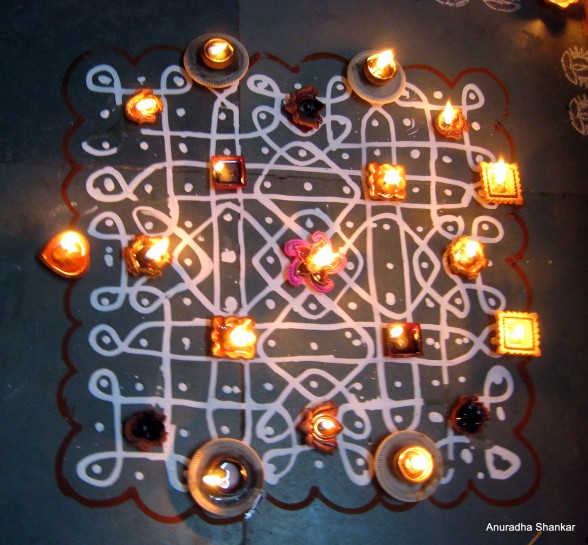
In Kerala, the best kolams are drawn for Onam….. and they are made with flowers!

Living in north India, by the time I grew up, I had learnt how to draw rangolis the way my friends did – with coloured powder. From my Maharashtrian and Gujarati friends, I learnt to apply a layer of wet red earth to the floor to make sure the powdered colour would stick….. These days, our house is decorated with coloured rangoli every Diwali.
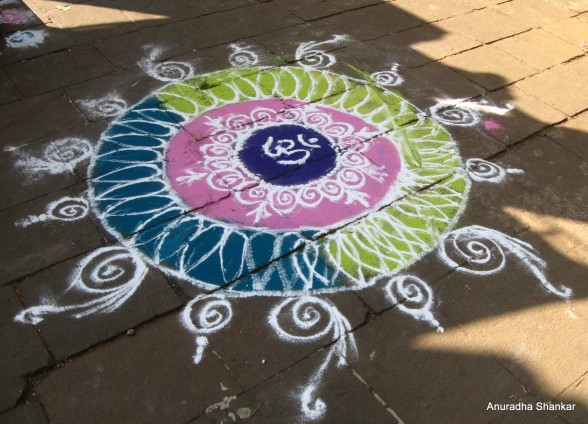
If December is the month to see kolams in south India, Diwali is the time to see Rangolis in the west and north.
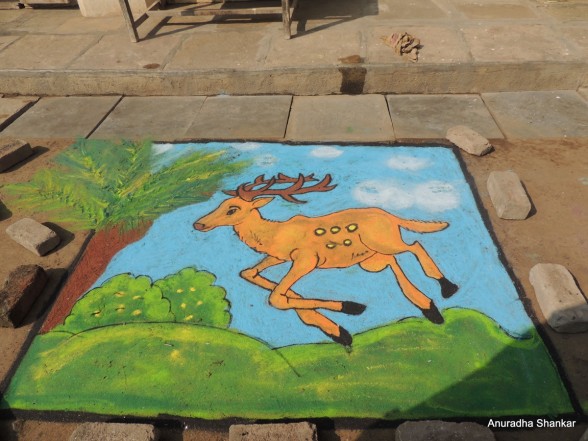
I have yet to travel east, but when I do, I will surely come back and update this post!
Read more:
Diwali celebrations in India
Going local: foreign brands in India
Not the 1st January: new year celebrations around India


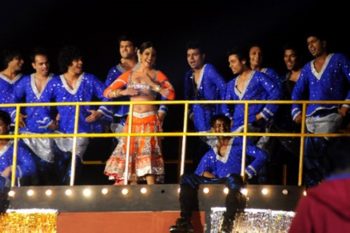
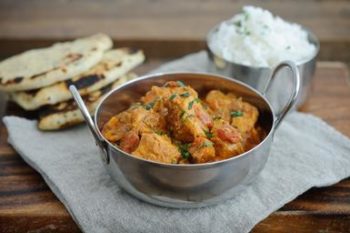

I’ve never heard of Rangoli before – great idea for a post Anu. It sounds a lovely tradition and the designs are very pretty.
I can’t wait to see India and them, they look wonderful and colorful
it is our tradition and these pictures have helped tremendously to show our next generation
Thanks so much, Lucy, Caterina and Rajalakshmi! Lucy, it just reminds me of all the things we take for granted, but what make us and our culture unique! Caterina, I hope you get to come to India and see these colourful creations soon! and Rajalakshmi, as I mentioned earlier, these are part of the things we take for granted, but showcasing them is necessary not just for showing it off to others, but also our own!